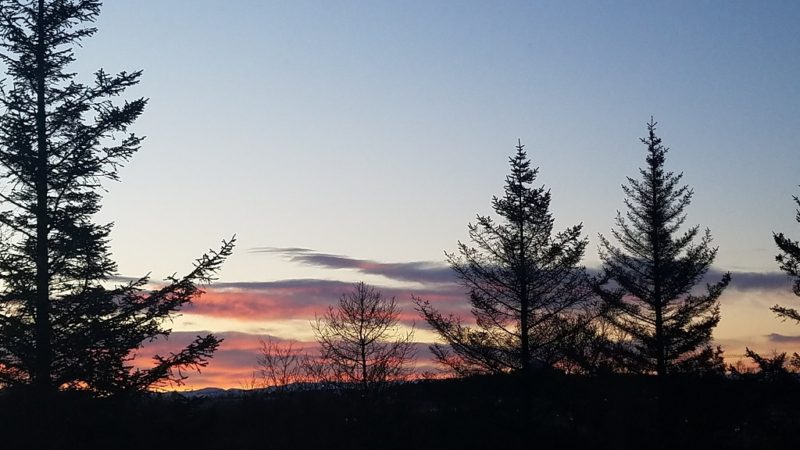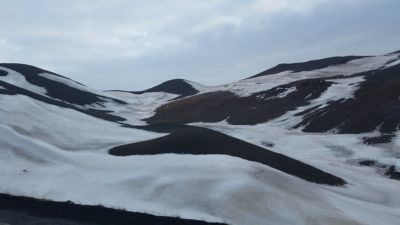
A Snowy Moonscape If There Ever Was One
So, you have probably heard that Iceland is green and Greenland is icy. There is a myth about war faring Vikings naming the nations, to give the wrong impression to their enemies. Well, that story is a myth, but indeed, Iceland is currently warmer and greener than Greenland due to the Gulf Stream. Only 11% of the country is permanently covered in ice. Greenland is 80% covered in ice.
When planning a winter visit, I was actually relieved to see temperatures were compatible with New York winters. High 30’s during the day and a bit cooler at night. I would not have to fear losing a finger, like I did when visiting the interior of Alaska in the winter. In fact, it happened to be a warmer than usual during my Alaskan visit and sometimes got above 0o.
Winter Traveling in Iceland – Inviting In its Own Way
I tell you all this, so you will consider visiting Iceland in the winter. There are upsides to doing so. As with any travel to a cold climate, you just have to keep in mind a few things, so you have a safe and fun winter wonderland adventure.

Isn’t traveling the Ring Road the best way to see the whole country?
I think it could be, although that is not what I did. Winter weather can be unpredictable in Iceland, and the Ring Road can be shut down for a couple days at a time. If you have booked Airbnb’s along the Ring Road, you may get off schedule and then have to drive far when the road reopens to get back on track.
Instead, I concentrated on a few regions. I flew to Akureyri and explored from multiple bases in the north. My travels were in late winter and on the whole had glorious weather (cold and sunny). I met people who were doing the Ring Road and loving it. So, with a good weather streak and a willingness to book lodging as you go, which could get extremely pricey, driving the Ring Road in winter is not impossible.
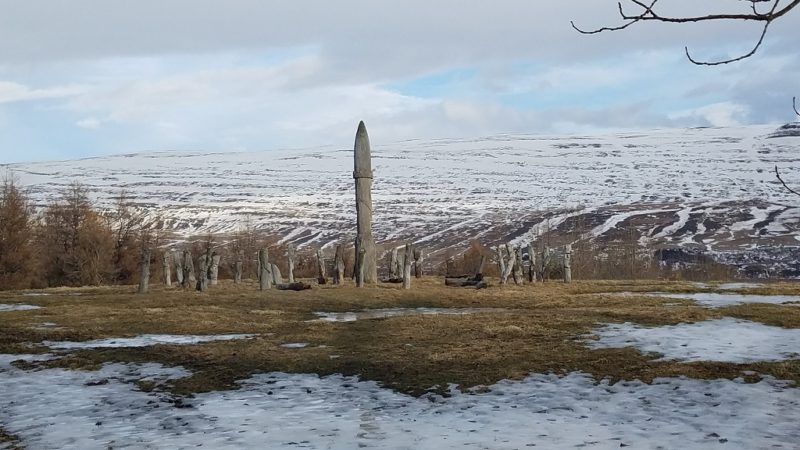
Are things less expensive in the winter?
Yes and no. Food, gas and museum visits are expensive year round. Hiking is free year round; visiting public pools is affordable year round. Lodging can be two to three times as much money in the peak season, although in the summer, camping is always an option. Airfare is less expensive in winter on IcelandAir. If you live near San Francisco, then WOW airlines has dirt cheap airfare in the winter.
There are some activities only accessible in the winter like skiing and ice cave tours, which can be pricey, but well worth it. Regardless of the season you visit, Iceland will be expensive compared to a lot of other places. It also offers some sights and experiences that make it unique. This of course is a lot of what makes it appealing.
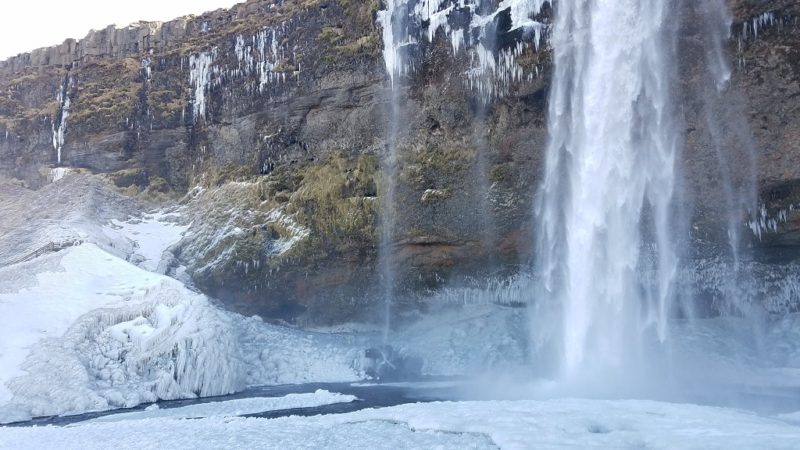
So if Iceland is not icy, I don’t need heavy duty gear, right?
There is a saying “if you don’t like the weather in Iceland, wait five minutes!” Like I said, I was blessed with mostly clear weather. Locals told me that this winter had been particularly stormy and it just started getting nicer around when I showed up. So, the short story is – you don’t know for sure and best to be prepared.
Here are a few things I would definitely make sure to bring. Merino wool undergarments. Icebreaker is my favorite. And then layer from there. I liked to wear a shirt on top that was very thin (more on that in a moment) and then a wool sweater. I also wore merino wool gloves as a first layer, and carried another pair along with me for when the wind picked up.
The thin shirt was because when I would go inside places, a museum or restaurant, it was warm and I needed to peel back the layers. Icelanders compensate for the cold outside with warm insides. Homes are typically kept around 74 degrees. Icebreaker has all sort of stuff to keep the head, face and neck warm. Invest in some, it’s good quality and it will a last for years. I also wore merino wool socks, they are warm as slippers and not bulky. I just love them.
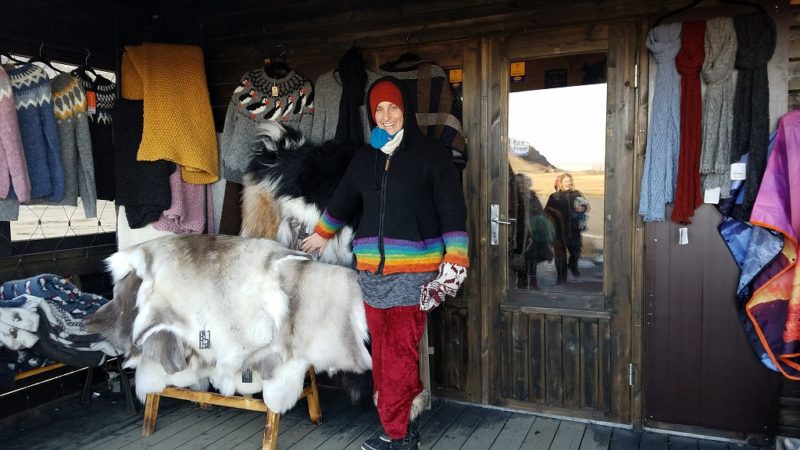
Dressing in Layers With a Merino Wool Base Layer Is Key
And what about shoes, my feet are always cold?
Yes, glad you asked, as I want to make a point here. I brought too many pairs, which took up a lot of space, so don’t make the same mistake I did. I felt like a traveling shoe saleswoman.
My Sorel boots were by far the most useful of my foot gear options. They are known for being durable and very effective at keeping the feet warm. I was comfortable walking in them all day, while also feeling like my feet were supported. I don’t know the ins and outs of what makes them so great, but they are great.
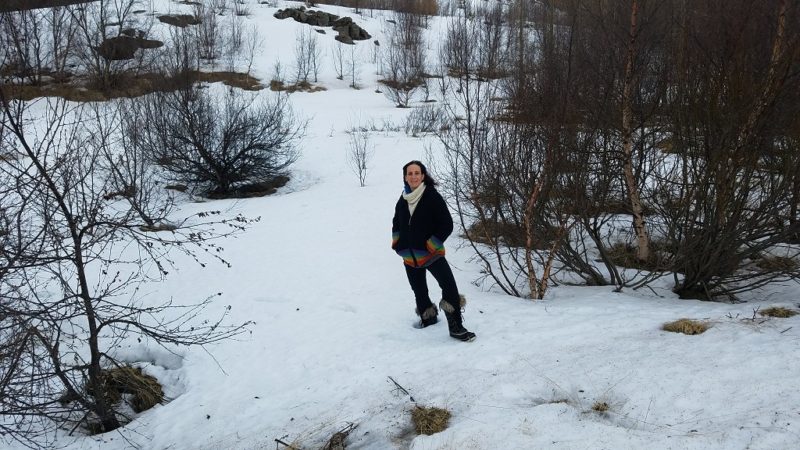
Sorel Boots Are King For Winter Travel
And then, please do yourself a favor and get a pair of traction devices! They cost about $60 and are super easy to put on. I cannot tell you how many times I saw tourists slipping and sliding and holding onto another slipping and sliding person, who also didn’t think to bring traction devices. Overall, the roads were clear in Iceland. But there were lots of places where the paths were icy. The days get above freezing, the nights below, and voila, you have icy paths that are not going to clear until well into spring. I put on the traction devices on my Sorels and I could trek around the parks of Northern Iceland with ease. It was honestly awesome to have some parks all to myself, since they were off limits to those without proper footwear. But now the secret is out of the bag.
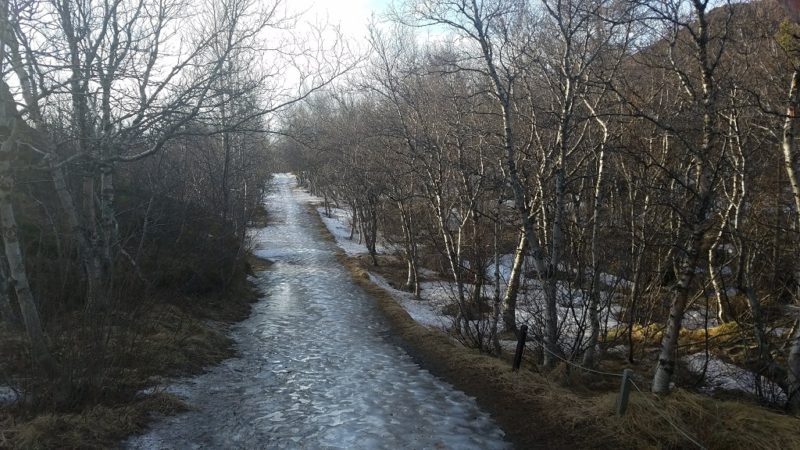
Simple Traction Devices Will Make Walking on Icy Paths a Non Issue – Get Some!
Isn’t it dark all but a few hours in the winter?
All sunlight is not created equal. The civil twilight (the time while our eyes perceive light before the sun rises and after it sets) is much longer in Iceland than it is in the temperate latitudes. If you started your travels on January 15th, the sun would be in the sky for almost 5.5 hours. But there would be almost 8 hours of daylight. For me, that is not enough sunlight to plan a trip around.
Let’s say you travel on February 15th, the sun would be in the sky for almost 8.5 hours. But there would be 10.5 hours of daylight. I could deal with it getting light at 8:30am and getting dark at almost 7pm. To compare, in New York on February 15th, the sun is in the sky for about 10.5 hours and there is about 11.5 hours of daylight. That is just 1 hour difference.
Plus, use the later sunrise as a reason to hibernate in the morning. I am sure you deserve the rest.
By the way, date and time is a great website for researching this.
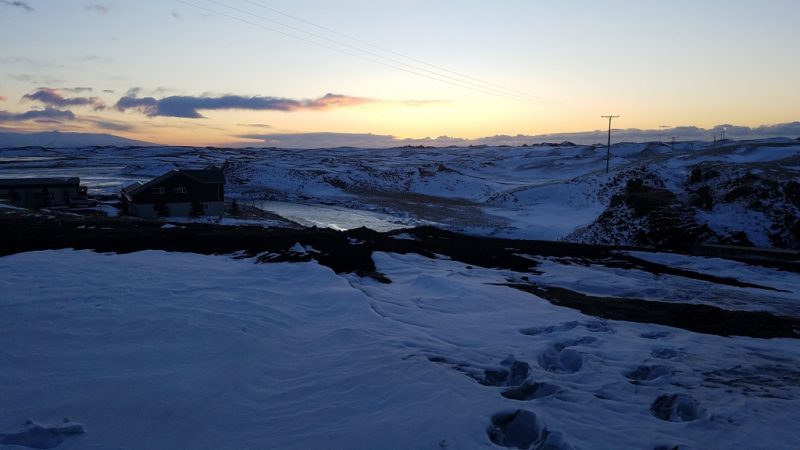
Lingering Dawns and Dusks Add 3-4 Hours of Daylight
I have never seen the northern lights and would love to!
Wouldn’t we all? I saw them once in Fairbanks and I am not finished chasing them. There are a variety of different factors that need to happen at the same time in order for us to see them. Iceland has a website to chart them on. The website reports the conditions for the solar flares, which are key determinants, and then there are additional factors.
Other than solar flares, another important factor is cloud cover. Cloud cover is common and will obscure the lights, if they are out. City lights are another factor. Getting outside of a town, even just 20 minutes away from the light pollution, is helpful. They come out for moments or minutes and without warning. In Alaska, I set my alarm for every 30 minutes to peek outside. Around 2 AM, I decided not to, and try to get some legitimate sleep. The next day I heard people talking about how awesome the lights were, starting around 3 AM.
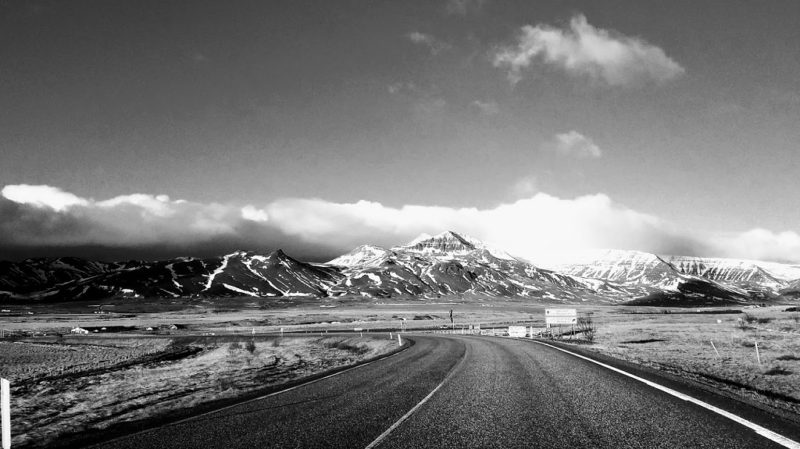 Tour companies in Iceland are more than happy to take your money and bring you out on a boat or bus with tons of other people, knowing that the chances are pretty slim you’ll see the northern lights. May I suggest you drive out somewhere on your own, or spend a few nights in a rural location and sleep with the shades open, so you can peek as often as you wish. Then bundle up and enjoy the light show, should you be lucky enough to see them.
Tour companies in Iceland are more than happy to take your money and bring you out on a boat or bus with tons of other people, knowing that the chances are pretty slim you’ll see the northern lights. May I suggest you drive out somewhere on your own, or spend a few nights in a rural location and sleep with the shades open, so you can peek as often as you wish. Then bundle up and enjoy the light show, should you be lucky enough to see them.
In short, consider a viewing of the northern lights icing on the Icelandic cake. And instead of wasting money on northern light tours, dedicate those funds toward some more dependable experiences – tour of an ice cave, a walk on a glacier, or extra visits to some of the marvelous private hot springs.
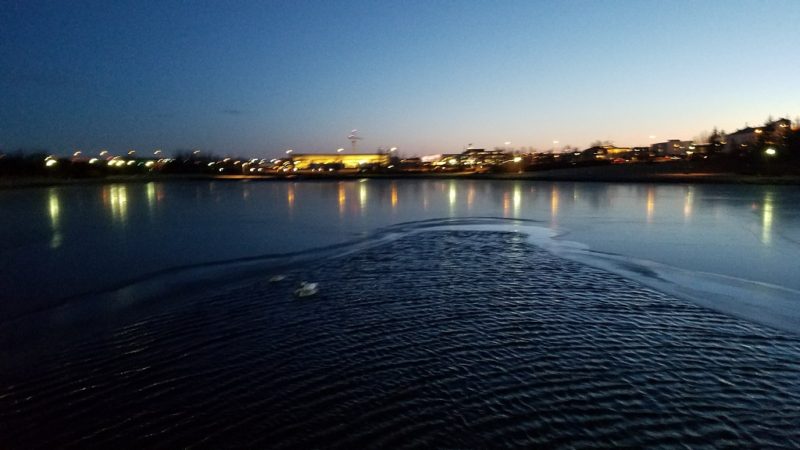
I know Icelanders are friendly people, but don’t you think Iceland can be dangerous in the winter?
Actually, I don’t think Iceland is dangerous any time of year. Of course, using caution with driving and traveling in the snow, or if a storm rolls through, is paramount. Icelanders have been wise to invest in good infrastructure. By the way, they have no military. And I did not see one police officer there, although I was told they exist.
Many of the attractions are not that far off the Ring Road. Which means that you should have cell reception almost all the time, should you need it. I will mention that the Ring Road does not have much of a shoulder, so be cautious about pulling over. I found this out when I pulled over onto what I thought was the shoulder covered by snow. To my dismay, I found that there was no shoulder and my car was tilted and deep in snow! Luckily someone with a truck and tools happened to come by about two minutes later and pulled me out. I have done similar things before and I am always grateful for escaping unscathed.
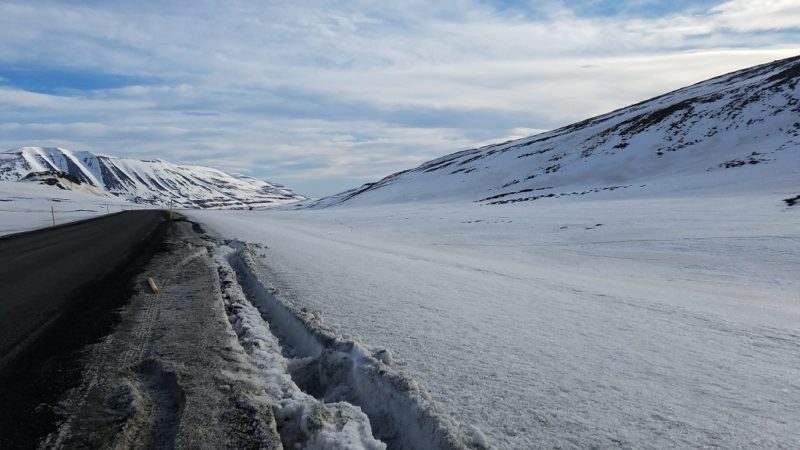
The Ring Road Has No Shoulder, As I Learned After I Got Stuck In the Snowbank
Also, every Icelander speaks English perfectly, so you will have zero language barrier issues if you are English speaking. Furthermore, Iceland is heavily touristed, mostly with people from Western Europe and the US and Canada. They all speak English as well.
To illustrate the sense of safety in Iceland, one of my Airbnb’s did not even provide a key. Granted it was in a rural area at the end of a road, but still. Iceland’s small population makes it seem more like one spread out community. Crime rates are very low. Guns are illegal.
So the only special winter consideration is to watch the weather reports and use common sense while traveling.
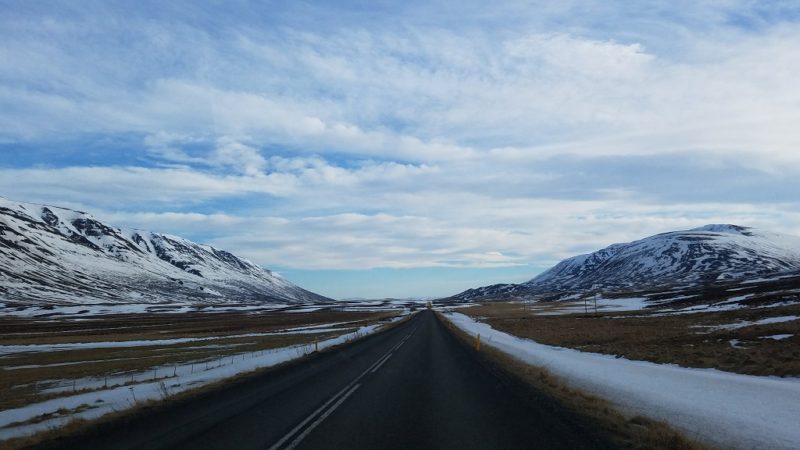
I know you didn’t ask, but I have a couple other thoughts on winter traveling in Iceland.
Do be prepared to change plans on a moment’s notice. I flew into Reykjavik from the Faroe Islands and was supposed to catch a flight later that day to Akureyri. Reykjavik was having a bad storm and while it was safe to land, it was not safe to take off. Iceland Air Connect said the next flight they could get me on was the next day, out of the domestic airport in Reykjavik (45 minutes from Keflavik airport). Even though I had an Airbnb reserved in Akureyri, I started scrambling on my smart phone to find a hotel in Reykjavik for the night and a bus to get me there. I never like wasting a day being derailed, but this is the price you may pay for winter travel in Iceland.
Lastly, although you will likely interact more with tourists than locals, since there are more tourists in Iceland than locals at any given time. There will be less tourists in the winter. This tourist to resident ration was actually a bit of a strange experience for me. I really love to talk to the locals when I travel and on this trip it seemed like I had to make a concerted effort to do so. I was just one fish in a huge lake of tourists. So whether it is at your hotel or the public pools or your favorite bakery or café – do take whatever opportunities you get to meet the locals.
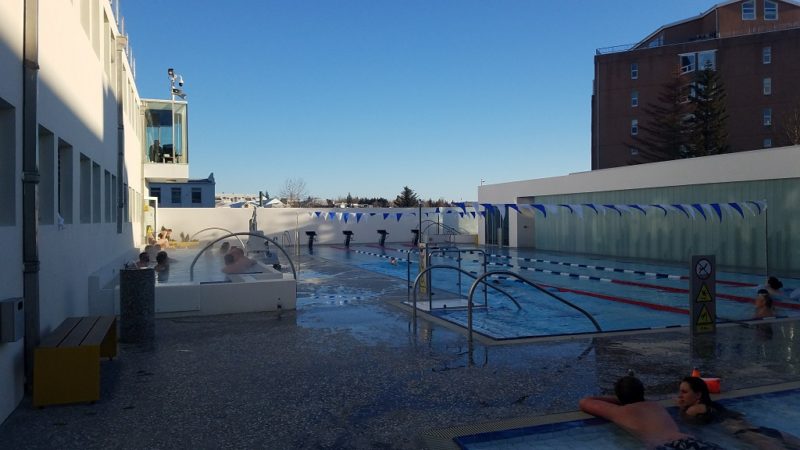
The Public Pools Are a Wonderful Place to Meet Locals
Don’t let the weather deter you from enjoying winter traveling in Iceland. If you practice a little common sense, you will have a great time.
